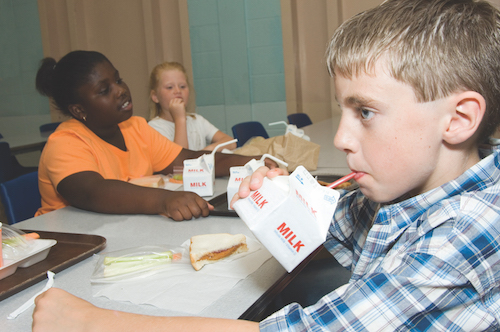 No child should have to worry about whether his or her family will be able to afford to put food on the table. But this was the reality for the 13 million U.S. children who, according to new data the USDA released last week, experienced food insecurity during 2016. For those children, uncertain access to enough healthy food has serious consequences for health, learning, and development.
No child should have to worry about whether his or her family will be able to afford to put food on the table. But this was the reality for the 13 million U.S. children who, according to new data the USDA released last week, experienced food insecurity during 2016. For those children, uncertain access to enough healthy food has serious consequences for health, learning, and development.
The fact that 16 percent of US households with children lacked the resources for healthy, consistent meals during 2016 underscores the vital importance of food assistance programs in fighting child hunger. According to the most recent data, children represent nearly half of the participants in the Supplemental Nutrition Assistance Program (SNAP), which provides low-income households with a monthly benefit for food purchases. In fact, research suggests that participation in SNAP for six months is associated with an 8.5 percentage point decrease in food insecurity in households with children. However, the families that access SNAP benefits often exhaust them by the end of the month, suggesting that current levels are inadequate.
Meanwhile, the National School Lunch Program (NSLP)—another key program that provides low-income children with free or reduced-price lunches at school—also did not reach all of its targeted beneficiaries in 2016. Research supports the link between NSLP participation and better food insecurity outcomes amongst children, however, the most recent reliable data suggests that between 2014 and 2015, 16 percent of low-income, food insecure households with children did not access free or reduced price lunches.
Those numbers suggest that there is more to be done to ensure that food insecure children receive the food assistance they need. This includes funding to increase the value of SNAP benefits so that families can afford food through the end of the month, continuing to make it easier for low-income children to access school food programs through the Community Eligibility Provision, and increasing awareness and access to nutrition assistance. But rather than bolster SNAP, NSLP, and other targeted child nutrition assistance programs,the House of Representatives and President Trump have proposed budgets that make draconian cuts to these lifelines, which will almost certainly translate to reduced benefits reaching fewer food insecure children.
With 13 million children still food insecure, it is essential to remind Congress and the President that we need to strengthen, not cut, our most powerful anti-hunger programs.
For additional resources and ways to take action: